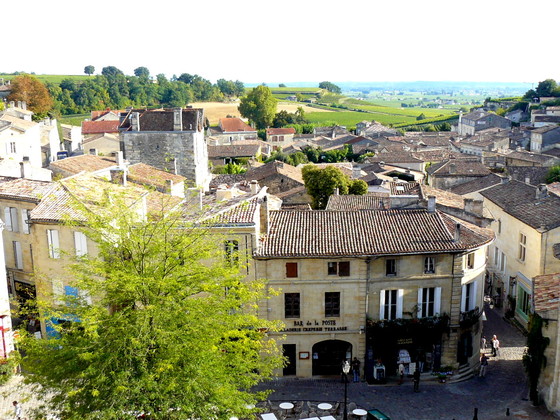Sunday, September 16, 2012
Drinking Lesson: Absinthe can get you hammered
Marteau is French for "hammer." It's also Gwydion Stone's brand of Absinthe, Stone being the founding member of an association called the Wormwood Society whose purpose is to educate bartenders and drinkers about the magic green distillate. Not an easy task, since competitors (virtually the entire alcoholic beverage industry, not to mention zealous government bureaucrats) are more than eager to demonize absinthe, ascribing to it every evil and unfortunate medical condition known to the planet.
Never mind that real absinthe, properly made, is a thing of beauty, "like drinking an Alpine meadow," as Stone put it last week to a dozen curious imbibers on the penthouse terrace of the Sorrento Hotel. It was the final session of 2012 for the hotel's popular series of monthly "Drinking Lessons," which resume next year on the second Wednesday of every month with two sessions a night in the hotel's elegant Hunt Club bar. Champagne, rare wines, tequila, rye, gin...an even dozen classes for $35 each, which includes an opening lecture, drinks, and Hunt Club bites.
Back to the drinking lesson for a sec. To sweeten the absinthe, drip some icewater through a sugar cube suspended on a slotted spoon above the glass. Don't set fire to the sugar! That's a bar trick from eastern Europe designed to camouflage counterfeit absinthe; the real stuff turns milky when water is added. Absinthe used to be cheaper than wine; that's why it was so popular during the Belle Époque, at the end of the 19th century. In its early years, until craft distilleries were legalized in Washington, Stone's Marteau was distilled under contract in Switzerland. Remember, it's a distillate, not an infusion. Now close your eyes and taste the meadow.
Program details and reservations for 2013 are here.
Sorrento Hotel, 900 Madison St., Seattle, 206-622-6400
Labels:
absinthe,
sorrento hotel,
Spirits
Location:
Seattle, WA, USA
Sunday, September 9, 2012
Who's Who in St. Emilion? Shh, it's Classified!

View from the hilltop: vineyards on the limestone slopes produce the best wine.
ST. EMILION, France--This village, 30 miles east of the Bordeaux city limits, encompasses just over 10,000 acres of vineyards (merlot, mostly), where some 70 of the best estates, located on the calcareous plateau overlooking the right bank of the Dordogne River, produce 10 million bottles of wine. It's a tiny part of what is generically called "Bordeaux," in reality a vast region that sends forth 700 million bottles a year, but it's got glamor and history, a couple of super-famous chateaux (Ausone and Cheval Blanc) and this amazing limestone village virtually unchanged since medieval times.
Once a decade, the local growers submit their wines for a ranking. This is virtually unheard of elsewhere in the region; in the Médoc, on the left bank of the river north of Bordeaux, the top châteaux were "classified" in 1855, and that's been that ever since. It was a ranking by market price at the time, and it's held up pretty well, even though it's also something of a self-fulfilling prophecy. But the vineyard owners of Saint Emilion agreed to put themselves through the wringer. The last time they did this, lawsuits flew in all directions, and it took years for the storm to abate. This time, the ranking was done by an independent panel of outsiders (still, all French), and the results are being met with applause.
Best news is that two excellent estates have been promoted to the very top of the classification (Premier Grand Cru Classé A): Pavie and Angélus.
Newcomers to the next notch down, Premier Grand Cru Classé B, were Canon-La-Gaffelière, La Mondotte, Larcis-Ducasse and Valandraud.
The new classification is a sweet victory for Gerard Perse, a supermarket magnate who bought Pavie in 1998 for $38 million. His predecessor, Jean-Paul Valette, was much admired for his consistent, understated style of wine making; Perse, on the other hand, wanted more concentration. In 2003, the year of the drought in Europe, the difference in style was the flashpoint of a controversy when the British wine writer Jancis Robinson wrote:
"Completely unappetising overripe aromas. Why? Porty sweet. Port is best from the Douro not St.Emilion. Ridiculous wine more reminiscent of a late-harvest Zinfandel than a red Bordeaux..."Needless to say, Robert Parker loved the wine. Also needless to say, that's what makes horse racing. If we all liked the same thing, we'd only need one thing.
Location:
Saint-Émilion, France
Subscribe to:
Comments (Atom)
